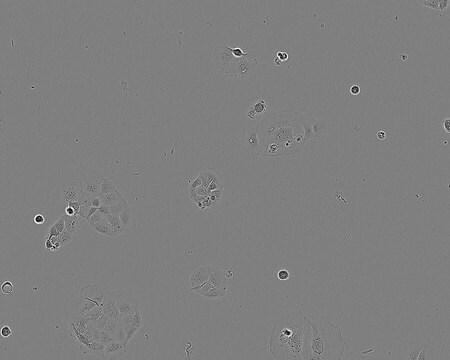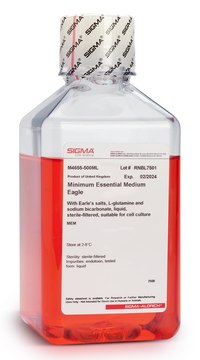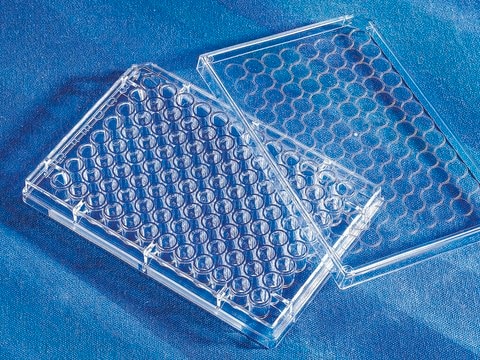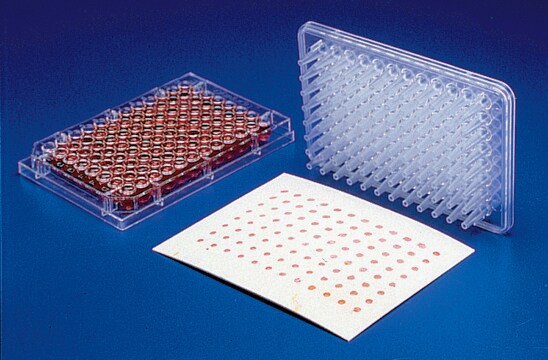09042001
CACO-2
human cervix, Epithelial
Sinonimo/i:
Caco-II Cells, Caco2 Cells
About This Item
Prodotti consigliati
Nome del prodotto
CACO-2, Caucasian colon adenocarcinoma
Origine biologica
human colon
Livello qualitativo
Stato
liquid
Modalità di accrescimento
(Adherent)
Cariotipo
(Hypertetraploid, modal no. 96)
Morfologia
Epithelial
Prodotti
Not specified
Recettori
Not specified
tecniche
cell culture | mammalian: suitable
Malattie correlate
cancer
Condizioni di spedizione
dry ice
Temperatura di conservazione
−196°C
Origine della linea cellulare
Descrizione della linea cellulare
Applicazioni
CACO-2 may be used as a cell model to study:
- in vitro permeability assay with various biopharmaceuticals
- in iron uptake and absorption studies
- in the cytotoxicity assay with surfactants and transporter inhibitors
- in liposome formulated drug uptake and cytotoxicity studies
Azioni biochim/fisiol
Profilo DNA
Amelogenin: X
CSF1PO: 11
D13S317: 11,13,14
D16S539: 12,13
D5S818: 12,13
D7S820: 11,12
THO1: 6
TPOX: 9,11
vWA: 16,18
Terreno di coltura
Mantenimento delle subcolture
Altre note
Esclusione di responsabilità
Codice della classe di stoccaggio
10 - Combustible liquids
Classe di pericolosità dell'acqua (WGK)
WGK 3
Punto d’infiammabilità (°F)
188.6 °F - closed cup
Punto d’infiammabilità (°C)
87 °C - closed cup
Scegli una delle versioni più recenti:
Certificati d'analisi (COA)
It looks like we've run into a problem, but you can still download Certificates of Analysis from our Documenti section.
Se ti serve aiuto, non esitare a contattarci Servizio Clienti
Possiedi già questo prodotto?
I documenti relativi ai prodotti acquistati recentemente sono disponibili nell’Archivio dei documenti.
Il team dei nostri ricercatori vanta grande esperienza in tutte le aree della ricerca quali Life Science, scienza dei materiali, sintesi chimica, cromatografia, discipline analitiche, ecc..
Contatta l'Assistenza Tecnica.








